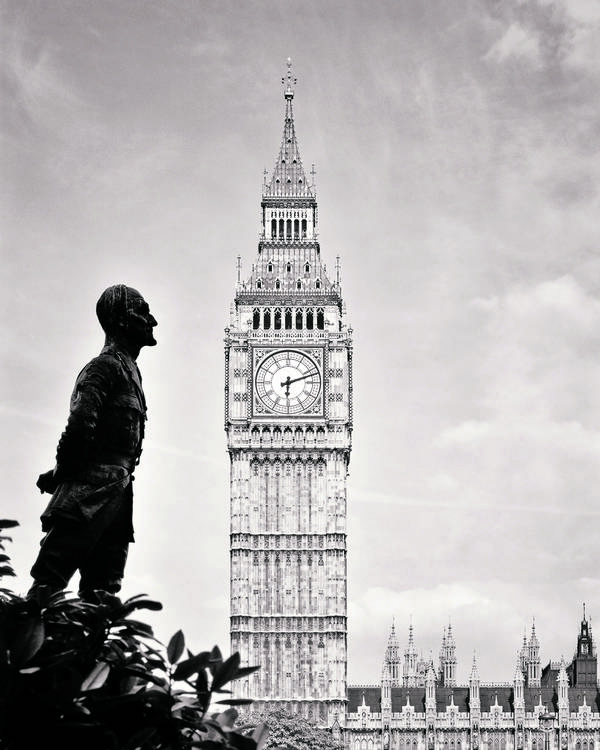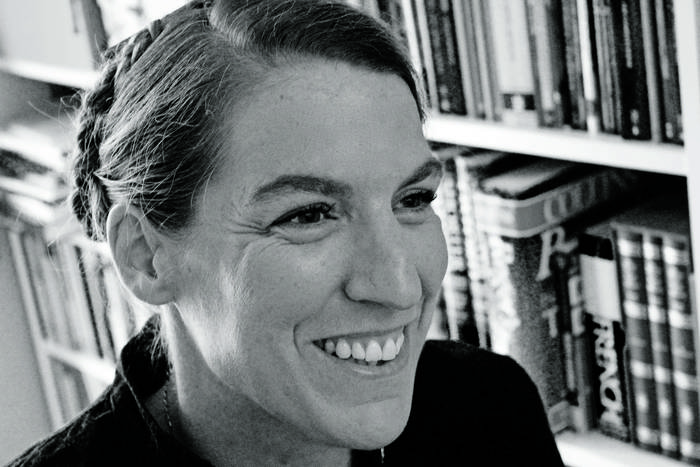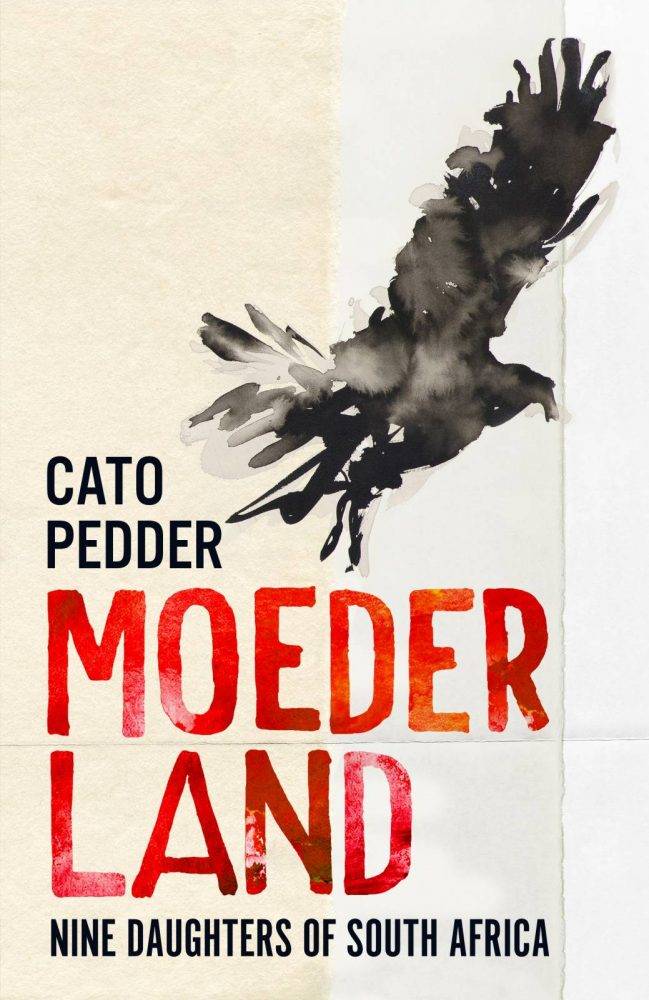Jan Smuts in 1944. (Photo by Keystone/Hulton Archive/Getty Images)
In calling me Cato, my parents are not trying to burden me, but to follow an Afrikaans tradition where names are passed down through generations, and where, as second daughter, I am named for my maternal grandmother, the only Afrikaner among them. It is an owning and a commitment that ensures I am forever connected to a country 6 000 miles from home, to a culture freighted with shame.
In 1973, perhaps, claiming descent from a world statesman, warrior, philosopher, from Prime Minister Jan Smuts, is a source of pride, not shame. But surely even then, I think, the stain of apartheid must have been apparent. Still, here I am. My name is Cato — pleased to meet you.
As children, we are fresh film on which no light has fallen, pristine. Until the reel starts to turn, and the light falls, and we too fall, into knowledge. It is all new to us, all strange, unsullied. Backlit with an unholy light.
Our South African grandmother might die before we are born, but we make the long journey south nevertheless, take trips cross-country to trees, monuments, landscapes. South Africa is stitched into the fabric of our selves from the beginning, from before the beginning, in all the actions and reactions of other lives that coalesce in our bodies.
For so long, that first film seems to be the only one. That the world has always been the same and will always stay the same. The stories we are told are huge, enormous. Creation myths. And if there are things we don’t know about the creation, we can ask. But time turns. People die. It all gets a bit lonelier. Until there is no one left to ask; there is only the ephemera they leave behind.
I take down a volume of Hancock and Van der Poel’s Selections from the Smuts Papers. “Renée Chiffers” it says on the flyleaf, and below that: “From Cato Smuts Clark, Christmas 1966” and then further down: “Catharina Petronella Pedder, from Renée Chiffers, January 1994”.
These books have sat on my shelves for decades, unread. I think of my grandfather’s secretary, Renée, with her neat white hair and bright pink lipstick, who passed them on to me because of the name I share with my grandmother.
 Power: The statue of South African statesman Jan Smuts in Parliament Square in London. (Photo by H. Armstrong Roberts/ClassicStock /Getty Images)
Power: The statue of South African statesman Jan Smuts in Parliament Square in London. (Photo by H. Armstrong Roberts/ClassicStock /Getty Images)
Of my mother who carefully transported them to university for me when I turned twenty-one: ten volumes in a cardboard box with grapes stencilled on the side. Of how, full of the preoccupations of Finals and irritated by the endless repetition of old stories, I pushed the box under the armchair in my college room and forgot about it.
By the time I turn to them, those old stories prove hard to unravel. Even my own memories are occluded. Here is an example: Lesotho, 1982. Under blue gum trees, we are stopped at a roadblock. The dusty leaves flicker in the sunlight.
The soldiers are dressed in khaki and carry guns. With a jerk of those guns, they urge us out of the minivan. I struggle again with time, against memory; the looped film is patchy, incomplete.
All this friable footage. The frames that show whether this is Lesotho or South Africa are missing. I think it might be Lesotho because the soldiers are black. I can remember that, and their faces: business-like. My father tries to use his fountain pen to sign the papers, but it has dried out.
“It must have been the aeroplane,” he says, making a nervous noise in his throat. My father is not a nervous man.
I phone my mother, whose film does not have the same gaps. Lesotho, not South Africa. And the aftermath of a murderous cross-border raid by South African commandos. Travelling with my cousin Hugh, they were worried he might be taken for a South African mercenary, with his hairy white legs, his shorts.
A gentle soul, Hugh is not likely to have taken up a machine gun, grenade or bazooka and killed any of the forty-two people slaughtered on 10 December. Which was just a fortnight before this moment we are remembering together, my mother reliving her relief as we drove on. She sends me a photograph.
There are no gum trees on the stretch of tarmac occupied by army trucks. Only rocks and a couple of scrubby bushes. And the blue mountain range in the distance.
My great-aunt Daphne dies in Cape Town in 2009. “Bury me in a bin bag,” she said. Years since she arrived in the retirement complex with its little white houses, when children were already learning about her era from textbooks.
“What beautiful skin you have,” she tells me, a dishevelled teenager in a shapeless skirt. That fine grace standing her in good stead when she is cast adrift in a land suddenly foreign. The society beauty who entertained the king of a diminishing empire on a farm on the veld.

 Cato Pedder, the great-granddaughter of Jan Smuts, explores her family’s legacy in Moederland.
Cato Pedder, the great-granddaughter of Jan Smuts, explores her family’s legacy in Moederland.
In the photograph from the archive, she leans fetchingly on a cane, slim in her pussy-bow floral blouse and waisted jumpsuit, dark hair beautifully shingled. Behind stretches the dry veld, with its wire fences and rocky margins.
History has begun. Daphne’s reel of memory burnt out. But even when people are still here, documents can reveal more than their memory, or lips.
I keep rediscovering that a question must be asked in exactly the right way, as if it were a key to a secret door to the doll’s house of memory where each room is exactly as it was left. I don’t have that key, only a chisel, which breaks the doll’s house as it enters, so I must try to reconstruct it.
It is important, suddenly, to reconstruct this lost past, where we came from. Because time does turn and twenty-five years after the racist paraphernalia of apartheid has been dismantled, after black people are legally entitled to vote, to have sex with and marry white people, to live wherever they like instead of in so-called “tribal homelands” or slums on the outskirts of white cities, 25 years after this has all become history, race has been mobilised in post-Rainbow Nation South Africa by an embattled African National Congress (ANC) and a proletariat fed up with the slow pace of change and the entrenchment of white power.
#RhodesMustFall, proclaim students as they occupy universities, topple statues of old white men: South Africa begins to appear less a miracle of reconciliation and more a weeping sore.
Globally, identity politics catch fire, #BlackLivesMatter activists protest against the continuing violence visited upon black people, #MeToo activists against the continuing violence visited upon women and girls.
I struggle with my place in all this, what ties me to it, to the white male power that continues to saturate South Africa and further afield: Jan Smuts, a South African statesman so revered by the British that in the 1950s a statue is raised to him in Parliament Square in London.
My great-grandfather was the only man to sign the peace treaties after both world wars. He was father of the Royal Air Force, central to the creation of the League of Nations and drafter of the Preamble to the United Nations Charter. He was prime minister of South Africa, twice, and Albert Einstein held him to be one of only 10 people who truly understood the theory of relativity.
But Jan Smuts was also a white supremacist who supported racial segregation in South Africa. Moral narratives shift and Smuts falls out of the history books, at least until the summer of 2020, when anti-racist campaigners, having thrown a statue of Edward Colston in Bristol Harbour, turn to the statue of Jan Christiaan Smuts in Parliament Square.
Struggling to understand on which page to find myself in this contested history, I construct family trees, pin them to the back of my study door. The same names, my names, hang like fruit on this tree.
I run my finger down lists of the dead where women’s names are misplaced as they marry, the lost girl sliding into the depths as the grown woman takes her husband’s identity. I try on the masks of the past, consider how South Africa has a powerful narrative attached to it, of tragedy, oppression, blood.
How it is a narrative populated by men. Those old half-truths frustrate me, those battles and political wrangles, with their exclusive masculine patina, the women consigned to silence, swelling a crowd, swaddling a baby.
How do people like me fit in? Where are we while the camera is on the men?
Moederland: Nine Daughters of South Africa is published by John Murray.